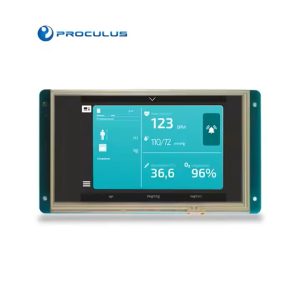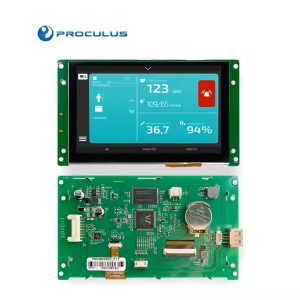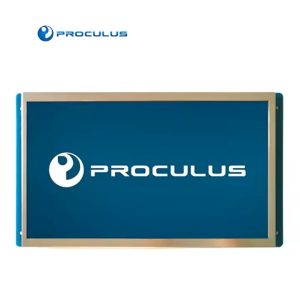Why Do You Need a Sunlight Readable LCD for Outdoor Use?
Sunlight-readable means the display can be viewed in high ambient light conditions. It is difficult to view a standard monitor in direct sunlight because the sunlight is much brighter than the display. The reflection on the display will wash away the image on the screen.

The following are general recommendations for choosing LCD screen brightness for outdoor use under different surround brightness.

Typical LCD module products are sufficient for most indoor environments, but do not provide readability in outdoor or the requirements to deliver high performance in rugged or extreme environment applications. Proculus P80480J70I-X06 has a rugged, high-brightness LCD touchscreen, designed for high performance in extremely intense sunlight glare conditions and meets specific vertical industry standards, which is superior to ordinary commercial grade displays.


Advantages of PROCULUS sunlight-readable TFT LCD for out-door use.

Brightness up to 900 nits
True sunlight-readable displays are generally considered liquid crystal displays with screen brightness of more than 700 CD /m2 (NITS) or greater. The Proculus P80480J70I-X06 Sunlight-readable Enhancement LCD displays 900 nits at full intensity.
Enhanced sunlight readability
Good sunlight readability is not equal to high backlight illumination brightness value. For example, the sunlight is strong, but also dazzling. A very bright screen doesn’t necessarily give us the brightness we want, because what the human eye sees is the amount of illumination, which is affected by the environment, the size of the space, and many other things that can only be measured by instruments. The picture of Proculus sunlight-readable lcd is soft and does not hurt the eye.
Low power consumption
Normally, if the backlight brightness is increased, LCD will consume more power and generate more heat. Proculus’s sunlight-readable LCDs use the latest low-power, high-brightness LCDs to minimize power consumption. Our sunlight-readable TFT LCD screens are available with a variety of touch screen options, including capacitive Touch Screen and P-cap. Proculus’s sunlight-readable LCD has been successful in areas such as gas stations and outdoor advertising.
Long life well over 20,000 hrs
Working temperature is an important parameter for customers to choose a highlighted LCD screen. A good highlighted LCD screen has low heat dissipation and low power consumption. The higher the temperature is, the faster the shorter the led lifecycle will be. Proculus sunlight-readable LCD Module has high temperature resistance, the working temperature of the display is between -10 ℃ and +60 ℃, and the lifecycle of the led is over 20,000 hours.
Optical bonding
Optical bonding is the process of filling the air gap between the TFT LCD display module and the top surface of the display with an optical grade adhesive. It reduces the refraction of light (from the liquid crystal backlight and external light), thus improving the readability of the TFT screen. In addition, optical bonding improves robustness and touchscreen accuracy, preventing fogging and condensation.
Wide application scenarios
Besides outdoor use, Proculus sunlight-readable LCD Modules are also used in many indoor applications surrounded by windows, such as air traffic control centers, railroad cars, marine vessels, agriculture machinery, and public kiosks.
Conclusion
In order to meet the high brightness display application market, Proculus actively develops its own high brightness display technology to ensure that it can meet your application needs. The standard liquid crystal display is generally 300 ~ 500nits. The Proculus High Brightness solution currently helps enhance LCD brightness up to 900 nits while increasing color saturation and contrast. In addition, our high-brightness solution minimizes the power consumption, thus allowing the display to operate colder with minimal pressure, but with the highest reliability.

 English
English


